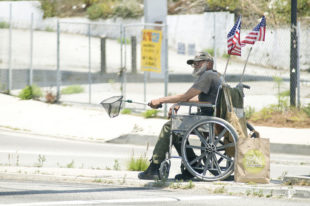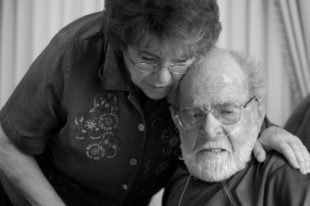Military Veteran Spouses and Caregiver Burden
Christian Counselor Spokane
Military Veteran spouses experience various obstacles with their spouse due to their envelopments in the military. Military Veteran spouses are often confronted with difficulties in their marriage, usually linked with the barriers of communication. It’s common for the Veteran to remove him/herself from emotion and become numb, or to be challenged with physical injuries, lessening their aptitude to keep employment and feel gainful.
 Military Veterans come back from their service struggling with their conduct, emotional state, their thought process, distressing imageries, and bodily injuries to the point where the family member or family members are now confronted and troubled with their loved one’s physical ailments and mental state (Sayer, Carlson, & Frazier, 2014).
Military Veterans come back from their service struggling with their conduct, emotional state, their thought process, distressing imageries, and bodily injuries to the point where the family member or family members are now confronted and troubled with their loved one’s physical ailments and mental state (Sayer, Carlson, & Frazier, 2014).
The struggles with most military Veterans is the inability to socialize with others, leading the Veteran into isolation, detachment from their spouse, confining the veteran spouse or the opposite, and self-medicating symptoms with polysubstance.
Studies have been conducted presenting military Veterans with a greater degree of substance associated conditions than the overall population (Miller, Reardon, Wolf, Prince & Hein, 2013). Yet, the challenges only become more detrimental for the family, specifically spouses when military Veterans endure physical injuries and become physically ailed, for the reason that military Veteran spouses become caregivers and struggle with caregiver burden.
The veteran population has access to means of health care; however, being familiar with the Veteran population, the programs provided and the process to obtain health programs can take time. There are prolonged delays in health care for Veterans and the longer the wait, the more Veterans and their families endure, creating an environment that becomes hard-pressed.
In the Elnitsky, Andresen, Clark, McGarity, Hall & Kerns study (2013), Veterans express their experiences waiting for health care through the VA as being extended delay periods with appointments, emergency room services, and obtaining medication through the VA’s pharmacy.
Devi (2014) indicates that Veterans have prolonged health care and describes Veterans’ experiences, in which one Veteran had a 9-week waiting period for a culture that concluded lung cancer, another Veteran waiting a period of 10 months to check on moles related to melanoma, and a Veteran having to wait 3 months for mental health services who was struggling with suicidal ideation (Devi, 2014).
The difficulty of caregiving does not end with their Veteran spouse, but also with other members in the family, such as their children. They now take on a dual role as both mother and father in a sense, based on how much the Veteran can contribute to the family.
 The challenges for spousal caregivers are higher due to living with the person they need to care for. They usually do not have much of a choice about being a care provider and do not always make the immediate connection of how the role of caregiving impacts them.
The challenges for spousal caregivers are higher due to living with the person they need to care for. They usually do not have much of a choice about being a care provider and do not always make the immediate connection of how the role of caregiving impacts them.
The struggle of caregiving only increases with the severity of limitations their loved one has. More often than not, veteran spouses do not have the training to provide the necessary care for their loved one and are not given the proper support from health care providers (Adelman, Tmanova, Delgado, Dion & Lachs, 2014).
Physical and Psychological Distress Triggered by Caregiver Burden
Deprived health, physically and psychologically, has been associated with persons caring for those with continual ailments, which are then triggered by caregiver burden. Caregiver burden can be associated with the distress of caring for a loved one, the severity of care, the decreased ability to work fulltime, social isolation, disruption in the marriage, financial stressors, and role reversals.
Vilchinsky, Dekel, Revenson, Liberman, & Mosseri (2015) suggest that caregiver burden is afflicted by the caring for their ailed loved one and how a caregiver identifies their somatic and emotional wellbeing, fellowship with others, or fiscal standing (Vilchinsky et al., 2015).
Heightened psychological problems tend to be the barriers caregivers face when providing care for their physically ailing loved ones ; nonetheless, studying the behavior of the caregiver when placed in extreme roles can show the extent of one’s belief and perceptions of caregiving.
Depending on how the Veteran spouse looks at their situation can determine how they express their emotion and how they determine the outlook of being a caregiver. Due to women caregivers enduring various responsibilities when caring for those they love who struggle with physical ailments and high levels of distress, it has come to be detrimental to counteract highly possible psychological problems in caregivers.
Ornstein & Gaugler (2012) discuss how various physical and psychological problems can intensify other factors such as suspicious misconceptions and aberrations of desertion, which can create extreme difficulty in caring for the individual leading the caregiver to feel not only the burden of caring for the individual, but also dread or empathy (Ornstein & Gaugler, 2015).
 One could ask, “Is caregiver burden more extreme for military Veteran spouses than the norm?” due to the fact that their husbands have endured physical, mental, and/or cognitive post-war complications.
One could ask, “Is caregiver burden more extreme for military Veteran spouses than the norm?” due to the fact that their husbands have endured physical, mental, and/or cognitive post-war complications.
There are several studies on caregiver burden in the general population, but they are limited in the post-military population. Bass, Judge, Snow, Wilson, Looman, McCarthy, Kunik & Mark (2012) discuss the basis of long-standing care for Veterans with dementia and the adverse effects it has on family caregivers, especially when dealing with Veterans who struggle with many conditions, behavioral issues, and high need of personal care (Bass et al., 2012).
Due to women caregivers enduring various responsibilities when caring for those they love who struggle with physical ailments and high levels of distress, it has come to be detrimental to counteract highly possible psychological problems in caregivers and to become familiar with their outlook and how they are impacted by their situation.
Research shows the relation between deprived physical wellbeing and psychosomatic suffering in those who are providing prolonged care to ailing loved ones. Mavandadi, Dobkin, Mamikonyan, Sayers, Tenhave & Weintraub (2014) acknowledge that couples can be subject to isolation from others due to the increase of behaviors that are deleterious in nature, such as bitterness, refutation, and uninvited guidance (Mavandadi et al., 2014).
Because caregivers become so engrossed in caring for their loved ones, they begin to battle with their own psychological health including symptoms such as distress, depressed mood, and high levels of anxiety leading to not only psychological problems, but issues with their physical health.
Female caregivers tend to feel the repercussions, for example, in their emotional state, physical wellbeing, and financial hardship. Caregivers need to learn to identify problems in their environment, connect with the appropriate resources, and be proactive in their own care to avoid physical and psychological distress.
There is so much involved when caring for someone, especially when it becomes unending care of an intense nature. The functioning of a caregivers can be compromised and can have detrimental psychosomatic magnitudes (Davis, Deane & Lyons 2015).
Family members take on the role of caregivers and with this comes extreme responsibility: having to learn how to care for their loved one and giving their loved one an excessive amount of time and care, not knowing if the time caring for their loved one will have an end date (Hornillos & Crespo, 2012; 2011).
Military Veteran spouses are often burdened with the responsibilities of caring for their physically ailed Veteran. Unfortunately, Veterans coming back from their experiences in the military return with unwanted problems that overflow into their surroundings, leading to a feeling of only existing in life and not fully living life.
 It is also known that female caregivers will tend to lessen their time at work or leave their work to take care of their loved one as opposed to a male caregiver (Christensen & Clinton, 2013). This could be due to roles that are set out for each gender from the beginning, such as how one is raised and one’s belief system.
It is also known that female caregivers will tend to lessen their time at work or leave their work to take care of their loved one as opposed to a male caregiver (Christensen & Clinton, 2013). This could be due to roles that are set out for each gender from the beginning, such as how one is raised and one’s belief system.
Even though women caregivers plunge into providing care that is necessary for their loved one, the need to form tactics in caring for themselves when dealing with numerous burdens is essential through services in the community and remote sector (del Río-Lozano, García-Calvente, Marcos-Marcos, Entrena-Durán, & Maroto-Navarro, 2013).
Research has presented an ample amount of literature regarding caregivers and their burden, which numerous individuals experience throughout the world, especially those who are married caregivers who struggle with a lifetime of burden when caring for their injured loved ones in need (Ebrahimzadeh, Shojaee, Golhasani-Keshtan, Moharari, Kachooei, & Fattahi, 2014).
Because of the struggles women caregivers endure, they are affected in their own health. Women’s health is more negatively affected by marital conflict (Zerach, Greene & Solomon, 2015). This conflict is attributed to the spouse essentially changing roles in the family due to caring for the loved one in need; heightening the responsibilities as an individual, duties as a mother, duties as a wife, duties as a financial provider, and therefore creating barriers in the marriage.
Quality of Life
One’s quality of life is detrimental in many ways. Experiencing a quality of life in a positive environment allows an individual to enjoy most all aspects of life. However, when one is challenged with difficulties physically, psychologically, and mentally, these challenges infiltrate on their loved one’s quality of life, hence, decreasing the quality of life in the individual and those caring for the individual.
Caregivers and their disabled husbands are challenged daily and find themselves significantly attached to whom they care for, increasing symptomology in the caregiver.
In the cross-sectional study by Ebrahimzadeh et al. (2013) utilizing questionnaires, interview process, and t-test inquiry showed poor quality of life in caregivers who were older, had more children, and extended length of time being a caregiver (Ebrahimzadeh et al., 2013).
Limitations are inevitable for caregivers and can increase in time, leaving the caregiver with a reduced ability to care for their loved ones. Unfortunately, with increased symptoms, a caregiver’s belief of quality of life is reduced to existence and not living. Connecting caregivers and their loved ones who are struggling with ailments with essential resources can give each one a new perspective of caregiving and being cared for.
Behaviorism could be utilized in the assistance in teaching caregivers new skills and reframing their behavior and thought process of their lack of quality of life. Theorists who emphasize behavior look to one’s previous or current setting to explain one’s behavior (Phelps, 2015) and environmental stressors can create certain behaviors in a person; however, Phelps (2015) suggests that within time one’s behavior will show stability (Phelps, 2015).
In order to change one’s behavior, it first needs to be acknowledged. Through counseling, feelings, thoughts, emotions, and behaviors can be identified and quality of life can be reclaimed.
As a Christian counselor and as a person who has been a military wife, we can work through the challenges of being a military Veteran spouse in a caregiver role as well as targeting other areas impacted by a loved one’s physical and mental challenges.
Adelman, R. D., Tmanova, L. L., Delgado, D., Dion, S., & Lachs, M. S. (2014). Caregiver burden: A clinical review. Jama, 311(10), 1052-1060. doi:10.1001/jama.2014.304Bass, D. M., PhD., Judge, K. S., PhD., Snow, A. L., Wilson, N. L., M.S.W., Looman, W. J., B.A., McCarthy, C., Kunik, Mark E,M.D., M.P.H. (2012). Negative caregiving effects among caregivers of veterans with dementia. The American Journal of Geriatric Psychiatry, 20(3), 239-47. Retrieved from http://search.proquest.com.library.capella.edu/docview/927835545?accountid=27965Christensen, E. W., & Clinton, Y. C. (2013). Demographics and burden on caregivers of seriously wounded, ill, and injured service members. Journal of Disability Policy Studies, 23(4), 235-244. doi: 10.1177/1044207311432314
Davis, E. L., Deane, F. P., & Lyons, G. C. B. (2015). Acceptance and valued living as critical appraisal and coping strengths for caregivers dealing with terminal illness and bereavement. Palliative & Supportive Care, 13(2), 359-368. doi:http://dx.doi.org.library.capella.edu/10.1017/S1478951514000431
Devi, S. (2014). Obama vows to address veteran health-care scandal. The Lancet,384(9946), 841. doi:http://dx.doi.org.library.capella.edu/10.1016/S0140-6736(14)61473-2
Ebrahimzadeh, M. H., Shojaee, B. S., Golhasani-Keshtan, F., Moharari, F., Kachooei, A. R., & Fattahi, A. S. (2014). Depression, anxiety and quality of life in caregiver spouses of veterans with chronic spinal cord injury. Iranian Journal of Psychiatry, 9(3), 133-6.
Ebrahimzadeh, M. H., Shojaei, B., Golhasani-Keshtan, F., Soltani-Moghaddas, S., Fattahi, A. S., & Mazloumi, S. M. (2013). Quality of life and the related factors in spouses of veterans with chronic spinal cord injury. Health and Quality of Life Outcomes, 11, 48. doi:http://dx.doi.org/10.1186/1477-7525-11-48.
Elnitsky, C. A., Andresen, E. M., Clark, M. E., McGarity, S., Hall, C. G., & Kerns, R. D. (2013). Access to the US department of veterans affairs health system: Self-reported barriers to care among returnees of operations enduring freedom and iraqi freedom. BMC Health Services Research, 13, 498. doi:http://dx.doi.org.library.capella.edu/10.1186/1472-6963-13-498
Hornillos, C., & Crespo, M. (2012;2011;). Support groups for caregivers of alzheimer patients: A historical review. Dementia, 11(2), 155-169. doi:10.1177/1471301211421258
Mavandadi, S., Dobkin, R., Mamikonyan, E., Sayers, S., Ten Have, T., & Weintraub, D. (2014). Benefit finding and relationship quality in Parkinson’s disease: A pilot dyadic analysis of husbands and wives. Journal Of Family Psychology, 28(5), 728-734. doi:10.1037/a0037847
Miller, M. W., Reardon, A. F., Wolf, E. J., Prince, L. B., & Hein, C. L. (2013). Alcohol and Drug Abuse Among U.S. Veterans: Comparing Associations With Intimate Partner Substance Abuse and Veteran Psychopathology. Journal Of Traumatic Stress, 26(1), 71-76. doi:10.1002/jts.21773
Ornstein, K., & Gaugler, J. E. (2012). The problem with “problem behaviors”: A systematic review of the association between individual patient behavioral and psychological symptoms and caregiver depression and burden within the dementia patient-caregiver dyad. International Psychogeriatrics, 24(10), 1536-52. doi:http://dx.doi.org.library.capella.edu/10.1017/S1041610212000737
Phelps, B. (2015). Behavioral Perspectives on Personality and Self. Psychological Record, 65(3), 557-565. doi:10.1007/s40732-014-0115-y
Sayer, N. A., Carlson, K. F., & Frazier, P. A. (2014). Reintegration Challenges in U.S. Service Members and Veterans Following Combat Deployment. Social Issues & Policy Review, 8(1), 33-73. doi:10.1111/sipr.12001
Vilchinsky, N., Dekel, R., Revenson, T. A., Liberman, G., & Mosseri, M. (2015). Caregivers’ burden and depressive symptoms: The moderational role of attachment orientations. Health Psychology, 34(3), 262-269. doi:10.1037/hea0000121
Zerach, G., Greene, T., & Solomon, Z. (2015). Secondary traumatization and self-rated health among wives of former prisoners of war: The moderating role of marital adjustment. Journal of Health Psychology, 20(2), 222-235. doi:10.1177/1359105313502563
Photos
“Rescue,” courtesy of MilitaryHealth, Flickr Creative Commons 2.0, CC0 License; “Veteran,” courtesy of Jay Adan, Flickr Creative Commons, CC0 License; “Goodbye,” courtesy of a4gpa, Flickr Creative Commons, CC0 License; “Couple,” courtesy of Vladimir Pustovit, Flickr Creative Commons, CC0 License





